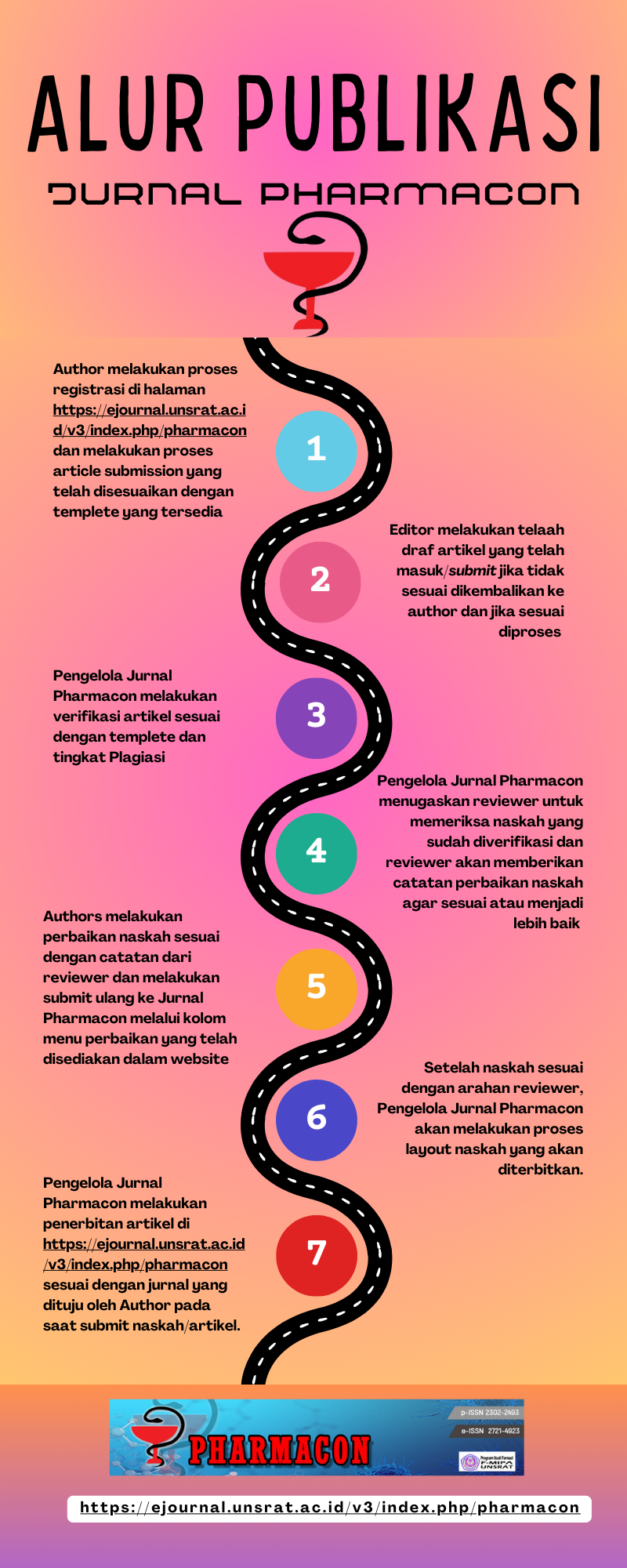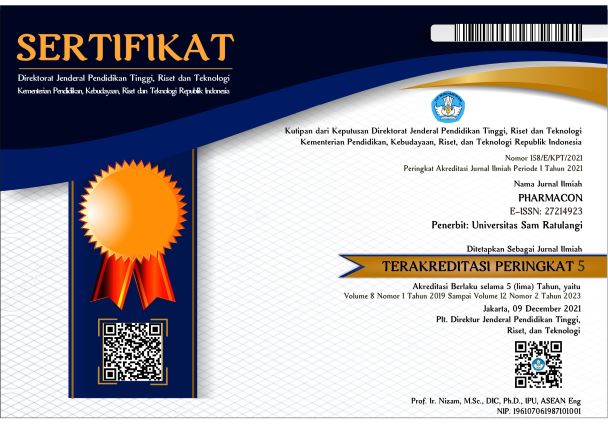KAJIAN ETHYLENE TRIPLE RESPONSE TERHADAP KECAMBAH BEBERAPA VARIETAS KACANG BUNCIS (Phaseolus vulgaris L.)
DOI:
https://doi.org/10.35799/pha.8.2019.29399Abstract
ABSTRACT
One of the appropriate cultivation techniques to increase land productivity, is intercropping cultivation. Intercropping is causing the  plant to grow in shelter. This sheltered situation can increase ethylene production, giving rise to a triple response (inhibits stem lengthening, thickening of the stem, and the appearance of the habit of making hooks that cause the stem to grow horizontally or horizontally) that could affect plant growth and development. The aim of this study was to look for varieties of snaps (Phaseolus vulgaris) that were less sensitive to the increasing of ethylene which was reflected in the form of a minimal response to high ethylene levels. The research method used was Test Paper Rolled and Placed in a Standing Position with Plastic. Three varieties used were Horti I, Horti II, and Lokal variet were germinated with treatment (carbide administered) and had been control for five days. The difference data between the measurements of controls minus the treatment, then analyzed with one way ANAVA followed by using the 5% LSD method (Smallest Significant Difference). The results were obtained for the higher hypocotyl length of Horti I variety (1,07 cm), the largest hypocotyl diameter of Horti II variety (0,13 cm), the largest epicotile bend of Horti II variety (7,22 cm), the largest epidermis cell length of Local variety (12,17 m), and epidermal cell width of Horti II variety (5.06 μm). Based on the parameters obtained, Horti I varieties we less sensitive to increasing ethylene content therefore it can be concluded that variet Horti I could grow optimally in shelter condition.
Â
Key words: Triple response, ethylene, shade, chickpea, carbide, hypocotyl, epicotyl, and epidermal
Â
ABSTRAK
Masalah yang umumnya dihadapi dalam membudidayakan tanaman buncis ialah kurangnya lahan untuk bercocok tanam. Teknik budidaya yang tepat untuk meningkatkan produktivitas lahan, salah satunya budidaya dengan pola tumpang sari. Pola tumpangsari menyebabkan tanaman tumbuh dengan keadaan ternaungi. Keadaan ternaungani ini dapat meningkatkan produksi etilen, sehingga menimbulkan triple response yang dapat mempengaruhi pertumbuhan dan perkembangan tanaman. Tujuan dari penelitian ini adalah untuk mencari varietas kacang buncis (Phaseolus vulgaris) yang kurang sensitif terhadap peningkatan etilen yang direfleksikan dalam bentuk respon yang minimal terhadap kadar etilen yang tinggi. Metode penelitian yang digunakan yaitu Uji Kertas Digulung dan Diletakkan Dalam Posisi Berdiri Dengan Plastik (UKDdP). Tiga varietas buncis yang digunakan dikecambahkan dengan pemberian perlakuan (pemberian karbid) dan kontrol selama lima hari. Data selisih diperoleh dari kontrol dikurang perlakuan kemudian dianalisis dengan ANAVA one way yang dilanjutkan dengan menggunakan metode BNT 5% (Beda Nyata Terkecil). Hasil penelitian diperoleh untuk panjang hipokotil tertinggi varietas Horti I (1,07 cm), diameter hipokotil terbesar varietas Horti II (0,13 cm), bengkokan epikotil terbesar varietas Lokal (7,22 cm), panjang sel epidermis terbesar varietas Lokal (12,17 m), dan lebar sel epidermis varietas Horti II (5,06 m). Berdasarkan hasil yang diperoleh, varietas Horti I adalah varietas yang kurang sensitif terhadap peningkatan kadar etilen dibandingkan dengan varietas Horti I dan varietas Lokal.
Â
Kata kunci: Triple response, etilen, naungan, kacang buncis, karbid, hipokotil, epikotil, dan sel epidermisDownloads
Published
How to Cite
Issue
Section
License
Authors who publish with this journal agree to the following terms:
- Authors retain copyright and grant the journal right of first publication with the work simultaneously licensed under a Creative Commons Attribution-NonCommercial 4.0 International License that allows others to share the work with an acknowledgement of the work's authorship and initial publication in this journal.
- Authors are permitted and encouraged to post their work online (e.g., in institutional repositories or on their website) prior to and during the submission process, as it can lead to productive exchanges, as well as earlier and greater citation of published work (See The Effect of Open Access)










